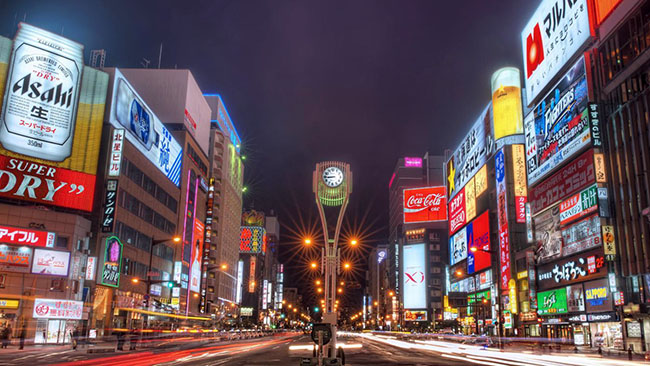In less than forty years after the defeats of World War II Japan become the great economic power in the world. It was somewhat a remarkable exception in modern economic history. Though, Japan has no valuable natural resources such as oil and gas, but its per capita income is $41,850 which is 102 times more than Afghanistan! What Japan went through that reached this stage of development? Before the defeat in 1945, all of Japan’s strength was spent on gaining power through war and, as a result, it led to the most heinous destruction. A high proportion of the industrial and commercial buildings together with the equipment they contained had been destroyed, and much plant and machinery formerly used in production for the civilian market had been scrapped to provide metal for munitions.
Due to this concentration of power used in war, the surviving Japanese people from the war were left with chaos, starvation, and unemployment when returning to their country. With almost a quarter of its nation’s housing accommodation destroyed, the Allied Occupation Forces came to rescue the devastated country. Although Japan was left with wastes and ruins of factories and infrastructures, Japan was able to reconstruct its economy from a fresh start by building on its prewar economic experience and gaining knowledge from the rest of the world.
With the three major reforms introduced and put into effect, the Japanese economy was on its way to recovery. However, by early as summer 1947, the Cold War tensions had started to build up in East Asia and the United States revised its policies towards Japan for the purpose of accelerating its economic recovery. The Dodge Plan in 1948, conducted by a Detroit bank president Joseph Dodge was implemented for the solution of bringing back Japan to full strength and ultimately removing American aid from Japan to prepare for the Cold War. He introduced three basic policies to mainly resolve the serious problem of inflation and to establish stabilization in Japan. The first was a balanced budget. The second was the suspension of new loans from the Reconstruction Finance Bank. This measure was aimed at cutting off at their source the supplies of new currency, which were seen as the fundamental cause of inflation. The third policy was reduction and abolition of subsidies.
The goal to accelerate the economy in such a short period of time with these three policies was almost impossible to achieve; due to sudden adjustments, but with the start of the Korean War in 1950, the economy boomed. Although these policies left by Dodge caused problems, he has set the basis for recovery without American aid and the Occupation of Japan ended in 1951. The work accomplished by Dodge had eliminated the financial problems in Japan and the Japanese were to achieve recovery through their own work by economizing and accumulating capital to be exposed to international competition.
The rapid economic growth in Japan from the beginning of the 1950s to the early 1970s did not only result from special government policies and revolutionary events, but were also achieved by the cumulative effort and hard work by the people. The unique characteristic and ability of the Japanese people to imitate and improve the skills learned, and then applying them to their own system was the most important factor for their successes.
One of the factors that the Japanese made use of their unique characteristic to expand the economy was to improve and make practical use of technologies and technological know-how’s imported from foreign countries. The Japanese were among the best at doing such a thing and often asserted that Japan has produced very little technology of its own. However, Japan has created new technology, such as the low-cost mass production systems, by combining numerous technologies imported from abroad. The most important point to recognize about Japan’s import of technology was that it was translated into industrial strength only because it was combined with domestic innovation. Technological improvements in Japan contributed greatly to its economic growth, because improvements of technologies in one industry influenced the growth of many other industries. For example, Japan’s steel industry successfully improved the quality of the special steel used in automobiles and as a result of technological progress in the casing of parts, the automobile industry, too, grew into an industry to be able to compete in international markets for the first time. Similar progress occurred in the shipbuilding industry also, and numerous industries were growing almost at a proportionate rate. As you can see, the improvements and modifications of technologies stimulated industries to develop an even more productive ways to grow and this trend led the Japanese economy to compete in the international markets.
To conclude, the most important factors that enabled Japan’s amazing economic growth, which was somewhat an exception to modern economic history was the culture and ability of the people itself to successfully combine all the knowledge and skills gained from foreign countries, and then improving those skills to fit their own system. The economic miracle did not occur simply from the reform policies implemented during the occupation of the American forces, but the basic factors for growth had already been prepared way beyond the start of WWII. The factors for the growth are unique and dependent upon each policies and strategies developed during the course of expansion.
Home » Opinion » The Main Factors to Economic Miracle in Japan
The Main Factors to Economic Miracle in Japan
| Mohammad Zahir Akbari

